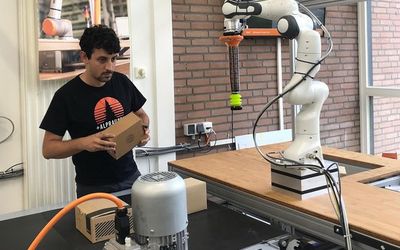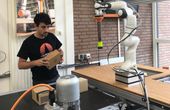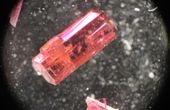XENSIV™ PAS CO2 sensor
A CO2 sensor with an incredibly small form factor based on photoacoustic spectroscopy (PAS).
Technical Specifications
| Type | CO2 Sensor |
| Interface | I2C, UART and PWM |
| Operating Range | 0 - 32000 |
| Operating Temperature | 0- 50 |
| Accuracy Supply Voltage | ± (30 ppm +3%) of reading between 400 ppm and 5000 3.3 V - 12 V |
| Supply Current | 800µA, 6.1mA |
Overview
CO2 is a key indicator of indoor air quality, and measuring it allows users to optimize energy efficiency, comfort, and health. PASCO2 is a carbon dioxide (CO2) sensor in a small form factor. The photoacoustic spectroscopy (PAS) concept is the building block of this design. The module is different from other CO2 sensors on the market because it takes up less space (more than 75%). Its tape and reel packaging, direct ppm readings, SMD capability, and basic design allow swift integration into users' systems. PASCO2 is used for low- and high-volume applications alike.
Photoacoustic Spectroscopy (PAS) Principle
According to this principle, the pulses of light from an infrared source pass through an optical filter tuned to the CO2 absorption wavelength (λ = 4.2 µm) specifically. At each pulse, the CO2 molecules inside the measurement chamber shake and produce a pressure wave as a result of the filtered light being absorbed by the molecules. This phenomenon is also termed the "photo-acoustic effect".
The acoustic detector, optimized for low-frequency operation, detects the sound, and the microcontroller changes the output into a CO2 concentration reading. The absorption chamber is acoustically insulated from outside noise in order to deliver precise CO2 sensing data.
PASCO2V01 Features
The PASCO2 sensor module integrates a microcontroller, a PAS transducer, and a MOSFET. The PAS transducer has an infrared emitter and a narrow-band optical filter. The MOSFET cuts the blackbody radiation from the infrared emitter periodically. This optical filter is tuned to the CO2 wavelength and Infineon’s MEMS microphone. This is optimized for low-frequency operation and acts as a pressure sensor. The dedicated microcontroller is capable of running advanced algorithms to deliver reliable and direct ppm results of CO2 levels.
PASCO2 comes with different configuration options, such as baseline calibration, sampling rate, and interfaces (UART, I2C, and PWM). The available configuration options make it a usable plug-and-play CO2 sensor.
The available configuration options include pressure compensation, dedicated ABOC (Automatic Baseline Offset Calibration), signal alarm, sample rate, and early measurement notification, which are mainly useful for managing power consumption.
PASCO2 is a sensor with a small form factor (14 x 13.8 x 7.5 mm3), accuracy, and performance at the ppm level (±30 ppm ±3% of reading). The module includes self-calibration algorithms and advanced compensation. This CO2 sensor is RoHS compliant and has a lifetime of 10 years. The operating range of the sensor is 0 ppm to 32000 ppm. The data produced is compliant with the strict regulations for indoor air quality. The module is space-saving and is expanding the consumer application market.
PASCO2 has advanced compensation and self-calibration algorithms in place. This makes it suitable for high-volume, standard, high-speed pick and place for automatic assembly. It is cost-effective for high-volume assembly and provides flexibility to users due to the variety of configuration options. The SMD package is delivered in tape and reel, offering a high degree of protection against electrostatic discharge (ESD), damage, and dust.
Applications
PASCO2 is perfect for applications including demand-controlled ventilation and air quality monitoring. It is also used as a major component in HVAC (Heating, Ventilation, Air Conditioning) in commercial and residential areas. PASCO2 is also used in lighting, air quality devices, smart thermostats, and agriculture.









